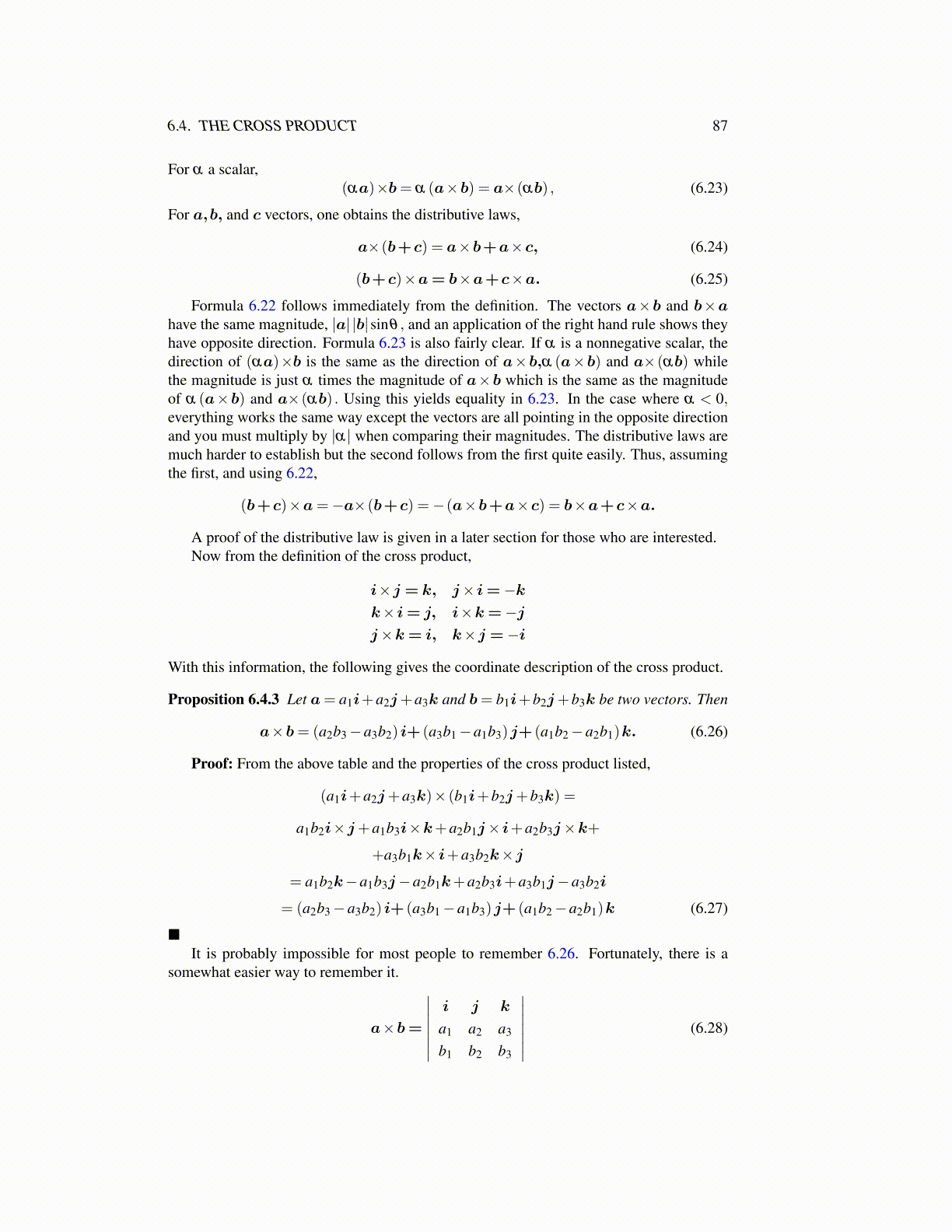
6.4. THE CROSS PRODUCT 87
For α a scalar,(αa)×b= α (a×b) = a×(αb) , (6.23)
For a,b, and c vectors, one obtains the distributive laws,
a×(b+c) = a×b+a×c, (6.24)
(b+c)×a= b×a+c×a. (6.25)
Formula 6.22 follows immediately from the definition. The vectors a×b and b×ahave the same magnitude, |a| |b|sinθ , and an application of the right hand rule shows theyhave opposite direction. Formula 6.23 is also fairly clear. If α is a nonnegative scalar, thedirection of (αa)×b is the same as the direction of a×b,α (a×b) and a×(αb) whilethe magnitude is just α times the magnitude of a×b which is the same as the magnitudeof α (a×b) and a×(αb) . Using this yields equality in 6.23. In the case where α < 0,everything works the same way except the vectors are all pointing in the opposite directionand you must multiply by |α| when comparing their magnitudes. The distributive laws aremuch harder to establish but the second follows from the first quite easily. Thus, assumingthe first, and using 6.22,
(b+c)×a=−a×(b+c) =−(a×b+a×c) = b×a+c×a.
A proof of the distributive law is given in a later section for those who are interested.Now from the definition of the cross product,
i×j = k, j× i=−kk× i= j, i×k=−jj×k= i, k×j =−i
With this information, the following gives the coordinate description of the cross product.
Proposition 6.4.3 Let a= a1i+a2j+a3k and b= b1i+b2j+b3k be two vectors. Then
a×b= (a2b3−a3b2) i+ (a3b1−a1b3)j+ (a1b2−a2b1)k. (6.26)
Proof: From the above table and the properties of the cross product listed,
(a1i+a2j+a3k)× (b1i+b2j+b3k) =
a1b2i×j+a1b3i×k+a2b1j× i+a2b3j×k+
+a3b1k× i+a3b2k×j
= a1b2k−a1b3j−a2b1k+a2b3i+a3b1j−a3b2i
= (a2b3−a3b2) i+ (a3b1−a1b3)j+ (a1b2−a2b1)k (6.27)
■It is probably impossible for most people to remember 6.26. Fortunately, there is a
somewhat easier way to remember it.
a×b=
∣∣∣∣∣∣∣i j k
a1 a2 a3
b1 b2 b3
∣∣∣∣∣∣∣ (6.28)